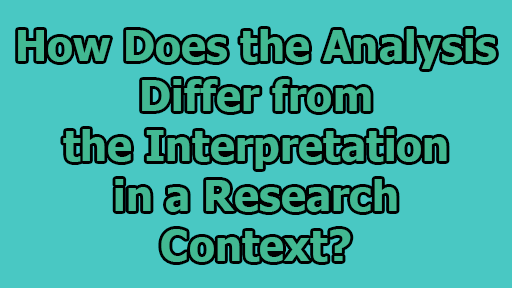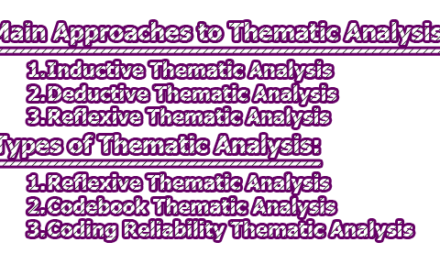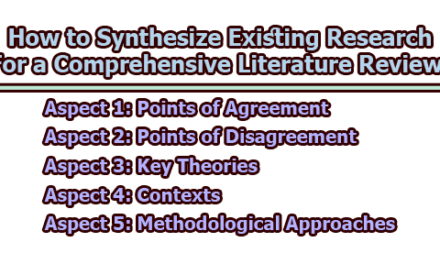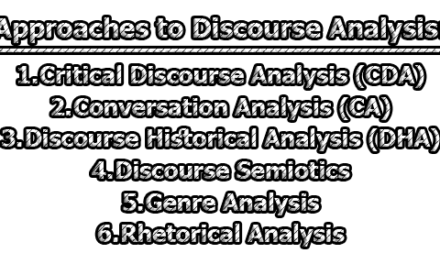How Does the Analysis Differ from the Interpretation in a Research Context?
Research is a multifaceted process that involves the systematic collection, analysis, and interpretation of data to derive meaningful insights. Two integral components of this process are analysis and interpretation, each playing a distinctive role in the journey from raw data to informed conclusions. In this article, we will explore how does the analysis differ from the interpretation in a research context?
Analysis:
Meaning: Analysis refers to the process of breaking down complex data into components or parts to examine their structure, patterns, and relationships. It involves organizing, categorizing, and summarizing data to identify key themes, trends, or patterns.
Methods: Analysis can involve various techniques depending on the nature of the data—qualitative data analysis methods (e.g., thematic analysis, content analysis) for non-numeric data, and quantitative data analysis methods (e.g., statistical tests, regression analysis) for numeric data.
Purpose: The primary goal of analysis is to transform raw data into a form that facilitates understanding. It provides the basis for making informed conclusions and decisions.
Interpretation:
Meaning: Interpretation involves making sense of the analyzed data by assigning meaning, significance, or context to the findings. It goes beyond the raw data and considers the implications, relevance, and broader understanding of the results.
Methods: Interpretation often requires a researcher’s judgment, critical thinking, and synthesis of findings. It may involve connecting the results to existing theories, frameworks, or literature.
Purpose: The purpose of interpretation is to answer the “so what” question. It helps researchers draw conclusions, offer explanations, and generate insights based on the analyzed data. Interpretation provides a deeper understanding of the research findings and their broader implications.
Key Differences Analysis and Interpretation in Research:
| Aspect | Analysis | Interpretation |
| Nature | Analysis is inherently objective and relies on established methodologies and procedures. It involves the systematic examination of data to identify patterns, relationships, or trends without introducing personal bias. The goal is to break down complex information into more manageable components, offering a clear and structured understanding of the dataset. | Interpretation is subjective and context-dependent. It goes beyond the objective examination of data and involves assigning meaning to the analyzed information. Researchers draw on their theoretical frameworks, personal perspectives, and contextual understanding to derive nuanced insights and explanations. Interpretation introduces a layer of subjectivity, as researchers bring their own experiences and perspectives to the analysis. |
| Focus | The primary focus of analysis is on answering “What” and “How” questions. Analysts aim to uncover the underlying structure or characteristics of the data, exploring the mechanics of observed phenomena. This process involves identifying patterns, relationships, or trends within the dataset, providing a foundation for subsequent interpretation. | Interpretation shifts the focus to addressing “Why” and “So what” questions. It seeks to understand the significance and broader implications of the identified patterns or relationships. Researchers explore the meaning behind the data and its relevance in the larger context of the research question or existing knowledge. Interpretation adds depth to the analysis by considering the implications of findings beyond the surface-level observations. |
| Purpose | The purpose of analysis is to break down complex data into comprehensible components. It aims to provide a clear and objective understanding of the dataset, facilitating further exploration and interpretation. Analysis is crucial for identifying key trends or relationships that form the basis for drawing meaningful conclusions. | Interpretation’s purpose is to ascribe meaning to the analyzed data. It involves contextualizing the findings within theoretical frameworks, existing literature, or the broader research context. Through interpretation, researchers move beyond the numerical or textual aspects of the data, offering a more holistic understanding that incorporates subjective perspectives and theoretical insights. |
| Methods | Various methods are employed during the analysis phase, depending on the research design. In quantitative research, statistical analyses such as regression, correlation, or descriptive statistics are common. Qualitative research may involve content analyses, thematic analyses, or other methods focused on uncovering patterns within non-numerical data. The emphasis is on structured and systematic techniques to extract information objectively. | Interpretation involves a broader set of methods that extend beyond statistical or content analyses. Researchers draw on theoretical frameworks, qualitative coding, or hermeneutic approaches to interpret the meaning of data. This phase requires a more flexible and exploratory mindset, allowing for subjective judgments and context-specific insights. Interpretation may involve synthesizing diverse sources of information to construct a cohesive narrative. |
| Outcome | The outcome of analysis is the identification of patterns, relationships, or trends within the data. It provides a structured and objective representation of the dataset, often presented through graphs, charts, or numerical summaries. The goal is to offer a foundation for subsequent interpretation and discussion. | Interpretation’s outcome is the derivation of deeper insights and contextual meanings. Researchers go beyond the observed patterns to explore the implications of their findings. The outcome may include rich narratives, theoretical contributions, or conceptual frameworks that add layers of understanding to the research question. Interpretation transforms data into knowledge by providing a meaningful context for the identified patterns. |
| Challenges | Challenges in analysis often revolve around potential bias in the interpretation of results. Researchers must navigate the risk of imposing preconceived notions on the data or overlooking relevant patterns. Additionally, organizing and prioritizing large volumes of data can present challenges, requiring careful attention to ensure comprehensive coverage. | Interpretation introduces challenges related to subjectivity and the potential influence of the researcher’s perspective. Maintaining objectivity while drawing meaning from data can be complex. Researchers must be aware of their own biases and reflexive in their interpretations to ensure that the insights generated are grounded in the data rather than personal predispositions. The dynamic nature of interpretation also means that different researchers may derive diverse meanings from the same set of data. |
| Nature of Data | Analysis primarily deals with raw data, focusing on the initial examination of the information collected during the research process. It involves processing data without assigning subjective meaning to ensure that the patterns identified are based on empirical evidence rather than personal interpretation. | Interpretation operates on analyzed data. It takes the outcomes of the analysis phase and infuses them with meaning. This involves considering the broader context, theoretical underpinnings, and the researcher’s perspective to generate a more comprehensive understanding of the dataset. Interpretation relies on the structured insights provided by the analysis phase. |
| Types of Research | Analysis is commonly associated with quantitative research, where numerical data is systematically processed and examined. Statistical analyses are employed to identify patterns or relationships, contributing to the empirical understanding of the research question. | Interpretation is a cornerstone of qualitative research, where the emphasis is on exploring meaning, context, and subjective experiences. Qualitative researchers engage in interpretive processes to uncover the deeper significance of their findings, often through in-depth interviews, observations, or textual analyses. However, it’s essential to note that both quantitative and qualitative research incorporate elements of both analysis and interpretation in their methodologies. |
| Questions Addressed | The questions addressed during the analysis phase are primarily concerned with “What does the data show?” and “How are the data related?” Analysts focus on uncovering patterns or relationships within the dataset, providing a foundation for subsequent interpretation. | Interpretation addresses the questions of “What does the data mean in the broader context?” and “Why are these patterns or relationships significant?” Researchers seek to understand the deeper implications of their findings, placing them within the larger framework of the research question and existing knowledge. Interpretation adds a layer of meaning to the patterns identified during analysis. |
| Relationship | Analysis and interpretation maintain a symbiotic relationship. Analysis provides the raw material for interpretation by uncovering patterns or relationships within the data. The structured insights generated during analysis serve as the foundation upon which interpretation builds, adding meaning and context to the empirical findings. | The relationship between analysis and interpretation is complementary. Robust analysis ensures that the data is thoroughly examined and patterns are identified objectively. Interpretation, in turn, ensures that these patterns contribute meaningfully to the understanding of the research problem by placing them within a broader context. Both processes work in tandem to produce comprehensive and nuanced research outcomes. |
In conclusion, analysis is the systematic examination and breakdown of data, while interpretation involves making sense of the analyzed data by providing meaning, context, and broader understanding. Both stages are crucial in the research process, leading to informed conclusions and the generation of knowledge.

Library Lecturer at Nurul Amin Degree College










